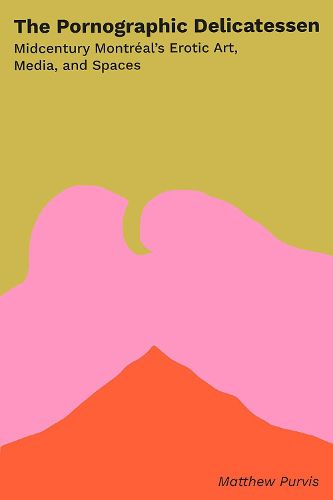Readings Newsletter
Become a Readings Member to make your shopping experience even easier.
Sign in or sign up for free!
You’re not far away from qualifying for FREE standard shipping within Australia
You’ve qualified for FREE standard shipping within Australia
The cart is loading…






Following the Second World War, Montreal earned a reputation as a North American hotbed of eroticism due to its Red-Light District, nightclub scene, and pornography industry. Although this erotic environment had a significant presence in the art and media of the period, the topic has been neglected by scholars. The Pornographic Delicatessen: Mid-century Montreal's Erotic Art Media and Spaces offers an important examination of the development of erotic art and design in the city's postwar and Quiet Revolution-era.
Matthew Purvis surveys a range of erotic materials to rediscover nearly forgotten artworks in a period that expanded definitions of what could be considered art. He stresses the confluence of visual art and film, magazines, and journalism during the period, as formal models passed from surrealism and automatism into the evolution of a Quebec-specific variation of Pop Art, ti-pop.
A deeply researched work, The Pornographic Delicatessen shows how eroticism was central to marginal art as well as how aspects were adapted and assimilated into the expanding field of institutionalized art being constructed through state intervention.
$9.00 standard shipping within Australia
FREE standard shipping within Australia for orders over $100.00
Express & International shipping calculated at checkout
Following the Second World War, Montreal earned a reputation as a North American hotbed of eroticism due to its Red-Light District, nightclub scene, and pornography industry. Although this erotic environment had a significant presence in the art and media of the period, the topic has been neglected by scholars. The Pornographic Delicatessen: Mid-century Montreal's Erotic Art Media and Spaces offers an important examination of the development of erotic art and design in the city's postwar and Quiet Revolution-era.
Matthew Purvis surveys a range of erotic materials to rediscover nearly forgotten artworks in a period that expanded definitions of what could be considered art. He stresses the confluence of visual art and film, magazines, and journalism during the period, as formal models passed from surrealism and automatism into the evolution of a Quebec-specific variation of Pop Art, ti-pop.
A deeply researched work, The Pornographic Delicatessen shows how eroticism was central to marginal art as well as how aspects were adapted and assimilated into the expanding field of institutionalized art being constructed through state intervention.